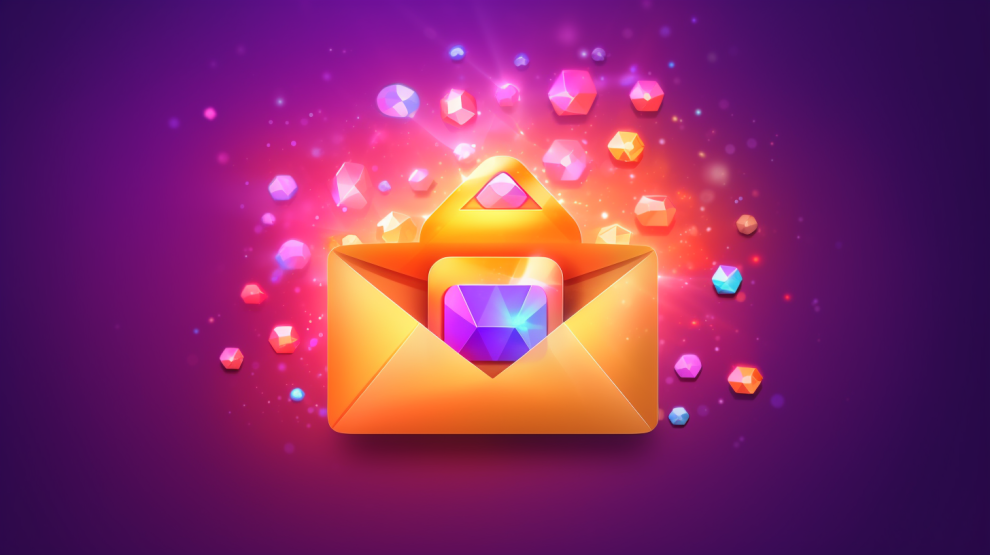[ad_1]
You’ve crafted the perfect cold email with a persuasive message and an attention-grabbing subject line.
You’re ready to hit send and wait for the responses to roll in.
But before you do, have you thought about timing?
Sending cold emails at the right time can make all the difference in whether or not they get opened, read, and responded to.
In this blog post, we’ll reveal the best time to send a cold email.
We’ll also go over:
- The best day for email opens
- The best day for email click-throughs
Let’s dive in!
Best Time to Send Cold Email TL;DR
The timing of your cold email can make or break your response rate.
Research shows that the golden moment to send a cold email is on Tuesday, Wednesday, or Thursday, ideally between 10-11am or 1-3pm.
| Day | Time Range |
| Tuesday | 10-11am 1-3:30pm |
| Wednesday | 10-11am or 1-3:30pm |
| Thursday | 10-11am or 1-3:30pm |
Why these particular times? Consider this: An email showing up at 2am on a Saturday from a stranger trying to sell you something – would you open it? Probably not.
But what if the same email pops into your inbox on a Tuesday afternoon? You’re in work mode, checking your email, ready to make decisions. This email might just pique your interest.
Best Day for Email Opens
When it comes to opens, Tuesday and Thursday take the lead. According to the numbers, people are in their groove, ready, and open to new possibilities.
In fact, Brevo found the highest open volume occurred on Thursday (20%), with Tuesday hot on their heels (18%). Weekdays as a whole account for 95% of the open volume over a 7-day period.
| Day | Open Volume (%) |
| Monday | 16% |
| Tuesday | 18% |
| Wednesday | 16% |
| Thursday | 20% |
| Friday | 15.5% |
| Saturday | 7% |
| Sunday | 7.5% |
But remember, these rates may vary across different industries – something we’ll dig into later.
Best Day for Email Clicks
Opens aren’t necessarily the best indicator of engagement. Clicks are more valuable.
Wednesdays have the most click-throughs – with 35% of the weekly click volume taking place on this day.
| Day | Click Volume (%) |
| Monday | 18% |
| Tuesday | 26% |
| Wednesday | 35% |
| Thursday | 7% |
| Friday | 9% |
| Saturday | 3% |
| Sunday | 2% |
One interesting trend that they found was that the volume of clicks falls off as the week comes to a close.
So, even though people were opening emails, less of them took action – which is an important consideration.
Days to Avoid
On the flip side, Mondays and Fridays fall short for cold emails. Monday’s inbox is filled with weekend backlog and planning for the week ahead, while Fridays are a mental countdown to the weekend.
Both days make it less likely for your email to capture attention.
However, don’t forget to consider factors like industry trends or seasonal shifts when picking your send dates. It might take a few rounds of trial and error to find your sweet spot.
Initially, these findings surprised me. From my personal experience, I’ve found that people are generally in a cheerful mood on Fridays, and I’ve been successful in scheduling meetings on this day.
Ultimately, it might depend on the objective of your outreach. If your goal is to schedule a discovery call or any other low-commitment activity, Fridays could indeed work wonders for you as well.
Time Zone Considerations
In our interconnected world, time zones can be the sly fox in your cold email strategy. Imagine your 9 am email turning into a 3 am wake-up call for your recipient – not the ideal first impression!
To avoid this faux pas, it’s crucial to align your emails with your recipient’s time zone. If you’re unsure of their location, a bit of quick detective work on their company info or LinkedIn profile should do the trick.
If you’re nestled in New York, sending to someone soaking up the California sun (that’s a 3-hour difference), you’ll want to time your email for 12 pm EST to hit their inbox at a civil 9 am PST.
Here’s a pro tip: make use of email scheduling features. This allows you to set up your emails ahead of time, ensuring they’re sent out at just the right moment, no matter the time zone difference.
GetResponse actually uses send-time optimization algorithms to find the perfect time to send emails to your audience.
Is Your Industry a Factor?

Did you know that syncing your cold email send times to the unique rhythm of your target industry could make a world of difference? The work patterns in each sector can greatly influence when your email might make the most impact.
Let’s say you’re reaching out to the e-commerce world. People often indulge in online shopping early in the week, aiming for a weekend delivery. Sending a well-timed email early in the week (perhaps on a Tuesday) might provide the perfect nudge for them to make a purchase.
When it comes to SaaS companies, many of their emails are content-filled newsletters relevant to their product’s use. Considering their audience uses these tools for work, it’s logical that they’d be more receptive to these emails during the work week.
And what about NGOs? Their work is fueled by passion and purpose. A Monday email could give their highly motivated audience the extra post-weekend energy needed to engage more deeply with their cause.
The key takeaway is this: each industry marches to its own beat. Aligning your cold email timing with their rhythm can greatly enhance your chances of getting a response.
It’s about understanding the audience – or, as we like to put it, reading the inbox!
The Best Time to Send a Cold Email Based on Industry
| E-commerce | Tuesday or Thursday | 10:00 AM |
| Software/SaaS | Tuesday or Thursday | 2:00 PM – 3:00 PM |
| Marketing Services | Wednesday | 4:00 PM |
| Offline Retail/Hospitality | Thursday | 8:00 AM – 10:00 AM |
| Professional Services (B2B) | Monday or Tuesday | 8:00 AM – 10:00 AM |
| NGOs (Nonprofits) | Tuesday or Thursday | 3:00 PM – 4:00 PM |
The Importance of Testing (Why Test?)

Despite general best practices around cold email timing, it’s important to remember that what works for one audience might not necessarily work for yours.
Therefore, testing and experimentation are key to unlocking the perfect timing for your unique target group.
Ready to experiment?
Here’s a simple step-by-step to get your timing experiments rolling:
- Start by establishing a uniform list size (let’s say, 100 contacts)
- Break this list into several smaller clusters
- Send email at different times for each group (for example, one gets the 9am Tuesday slot, another the 6pm Thursday spot). CoSchedule offers this template you can follow for your own sales email outreach tests.
- Keep an eye on open rates and engagement stats to discover which timing strategy hits the bullseye.
Other Cold Emailing Factors That Impact Email Response Rates

Though timing plays a pivotal role, it’s just one cog in the intricate machine of cold emailing.
Your subject line magnetism, your content substance, and even the way you present the recipient’s name can all sway your open rates.
The Reign of Subject Lines

Don’t forget the might of a compelling subject line. It’s your first impression, your initial “hello,” that decides whether the recipient will engage or dismiss your cold outreach.
Your mission? Make your subject line short, sharp, and something your prospect can’t resist clicking.
The secret ingredient? Personalization.
A New Yes Lifecycle Marketing report confirmed that personalized subject lines improve email open rates by 50%!
And remember, keeping your subject line between 28 to 50 characters is optimal since most of your readers will likely be checking emails on their mobile devices.
Try adding these personalization elements to your subject lines:
- Job title
- Company
- Industry
- Common connections
- Places they live
- Conference they attended
For example, “Ideas for [[Company]]” could be something to try!
The Power of a Personalized Email
Impersonal, mass email marketing usually ends up ignored or deleted, but a message that shows you understand the recipient? That’s something special.
It’s not about just using their name in the subject line – personalization also extends to email.
Before every send, you should:
- Know your recipient’s role
- Understand their company’s goals
- Empathize with the challenges they face
This level of detail shows you’ve put in the time and thought, building stronger connections and getting better results.
Breaking up your bigger email campaigns to target specific demographics or interests can amplify responses. (Don’t miss our guide on how to start & run a successful email marketing campaign.)
But don’t just take my word for it.
McKinsey has some interesting data that supports this: a whopping 71% of consumers anticipate personalized interactions from companies.
And when that doesn’t happen? 76% of them are left feeling frustrated.
So, it’s clear that personalization is more than just a nice-to-have – it’s what your audience expects.
The Follow-Up

Ever had a carefully crafted cold email disappear into the abyss of a packed inbox? It happens more than you’d think.
But don’t worry. That’s where the art of the follow-up shines.
Did you catch this? Backlinko reports that just one more follow-up email can skyrocket your reply rates by 65.8%! Now that’s something to think about.
Think of it as a friendly nudge, a small reminder a few days (3-5 days) after your first email that can prompt a response.
Another effective tactic? Weave in value emails into your cold email outreach.
These aren’t your run-of-the-mill “look at me” messages, but more like little presents of helpful information, shared without expecting anything in return.
It could be a timely blog post, an insightful case study, or a news flash about the latest happenings in your recipient’s industry. These goodwill gestures go a long way in cementing your reputation as a valuable contact.
Keep this in mind – it usually takes over seven touchpoints to guide a customer toward making a purchase. So, if you need to follow up more than once, don’t lose heart!
But a note of caution: when you’re sending emails, there’s a delicate balance to strike between being persistent and becoming a pest. Your goal is to nurture a positive relationship with potential clients, not overwhelm them.
Steer clear of worn-out phrases like “just following up” or “touching base again.” These cliches are overused, offer no value, and can cause your follow-up email to be passed over.
Length of Email Body
A lengthy email can easily bore a reader and decrease your reply rate.
On the other hand, an email that is too short may not provide enough information to convince the recipient to take action.
Harvard Business Review suggests that the ideal length for a cold email body is between 75-100 words – this length yields the highest response rate at 51%.
Ensure you include only what’s necessary for the recipient to understand your message and act upon it. Also, make sure you avoid these spam trigger words (so you’ll land in the primary inbox!)
Best Time to Send Cold Email – Final Thoughts
So, there we have it – the ultimate guide to finding the best time to send cold email marketing.
Now, here’s my challenge for you. Consider your current cold email outreach practices. Are you paying enough attention to timing?
Are there changes you could make, tweaks you could implement, to elevate your cold emailing game?
Are you using the right tools? You may want to check out our ConvertKit review!
And finally, the question that I leave you with: when will you send your next cold email campaign?
[ad_2]
Source link









